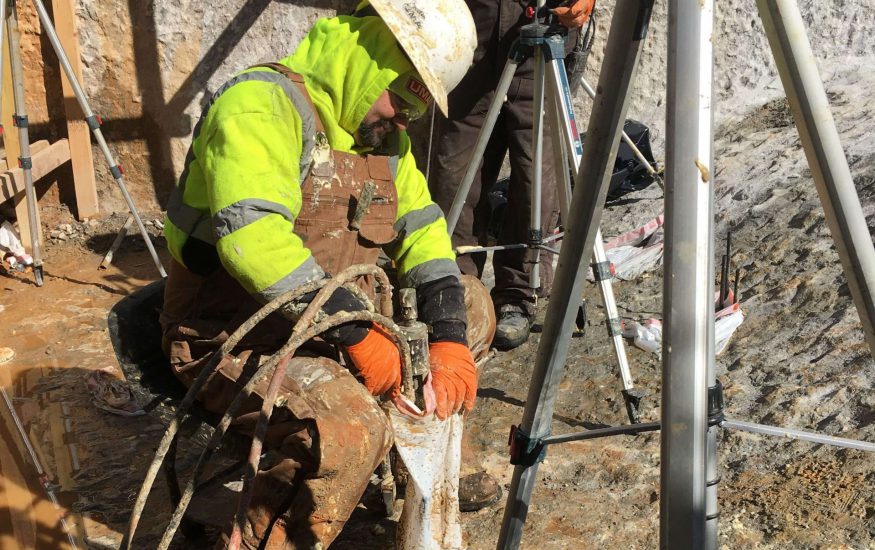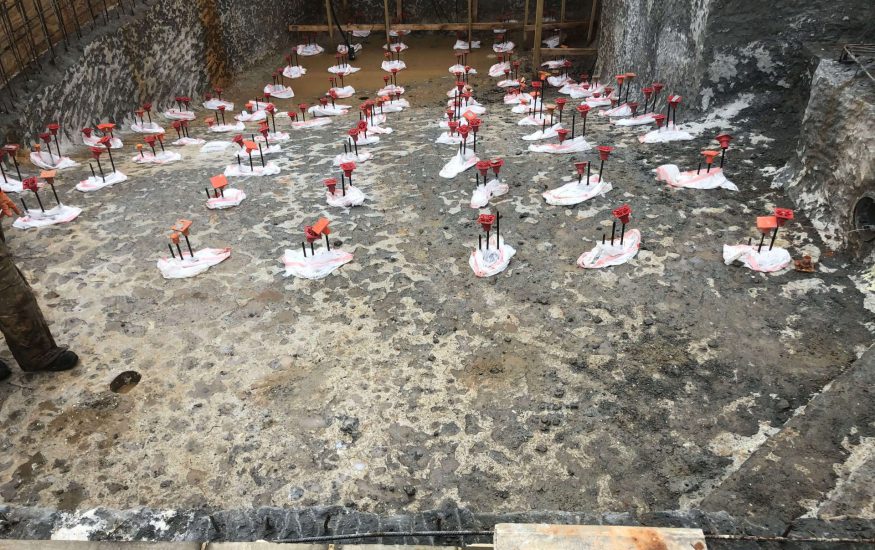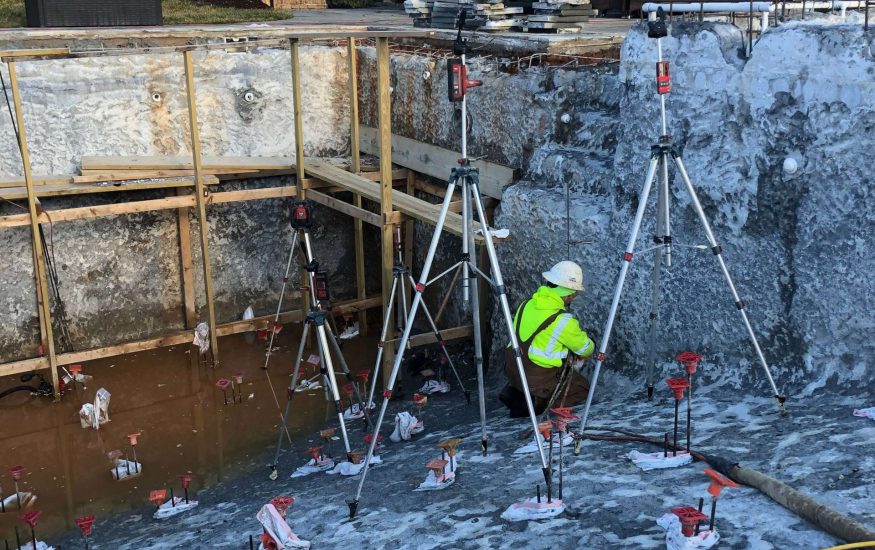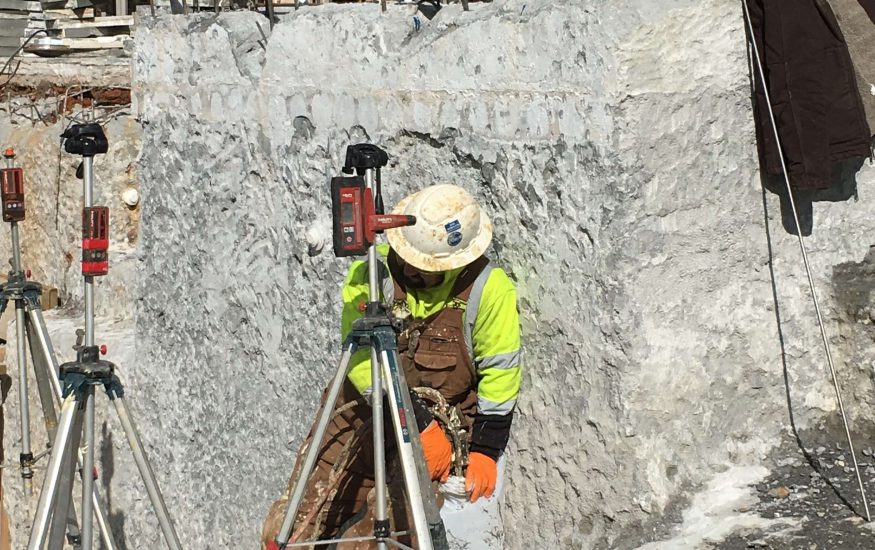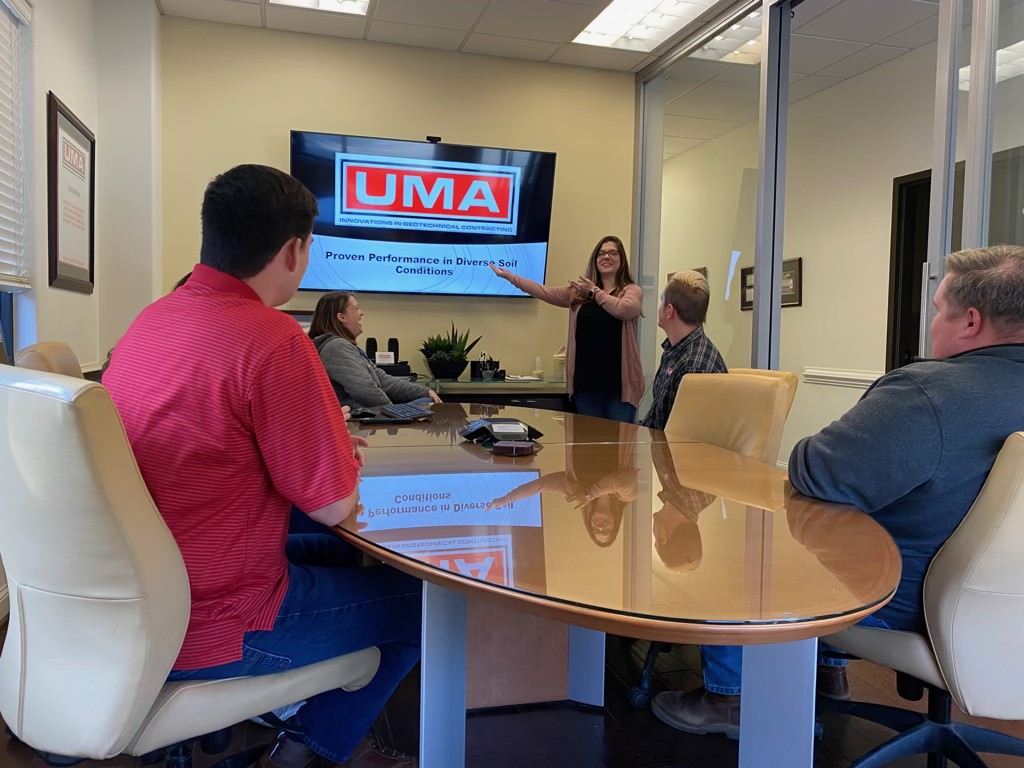UMA Corrects Pool Settlement Issues with HDPR Injection
May 5, 2021
UMA was contacted in January 2021 regarding a residential pool in Winston Salem, North Carolina that was experiencing settlement issues in the shallow end. Before UMA’s involvement, Catawba Valley Engineering & Testing (CVET) conducted soil test borings at the property to determine the in-situ soil conditions. Drilled soil test borings, hand auger borings, and dynamic cone penetrometer (DCP) tests in the settlement area revealed existing fill soils, alluvial soils, and residual soils. The fill and alluvial soils consisted mainly of sandy clay with very soft to stiff cohesive soil consistencies. There was also a review of aerial photos that revealed an apparent open ditch excavation for a storm drainage pipe installed in February 2005. The pipe appeared to be directly under the existing pool. All of these factors contributed to the observed settlement.
Based on the findings, CVET recommended UMA’s High-Density Polyurethane Resin (HDPR) Injection to remediate the problems. UMA’s approach was to densify the low consistency soils and fill the void space without lifting the pool and causing potential damage to the structure to eliminate future settlement.
UMA determined that injecting HDPR by performing Deep injections (DIs) was the best method to solve this problem. UMA planned to perform a series of DIs at increments of 3 feet below the bottom of the pool to a final depth of 9 feet. The pool treatment area consisted of approximately 640 square feet with DIs placed on approximate three-foot centers.
Extreme caution had to be exercised, because if we lifted the structure, even the slightest cracking could cause more damage. UMA deployed laser measuring devices capable of measuring tolerances within 1/16 of an inch. In addition to monitoring elevations, avoiding further damage, and alleviating pore pressure increases from excess water, our crews had to methodically inject material by periodically “jumping” back and forth between the shallow and deep ends. This made the process slower than working in a single area because equipment had to constantly be moved and re-calibrated. Despite the additional time required, the work was done effectively and damage-free. The client’s pool technician repaired the surface of the pool following our injections.

